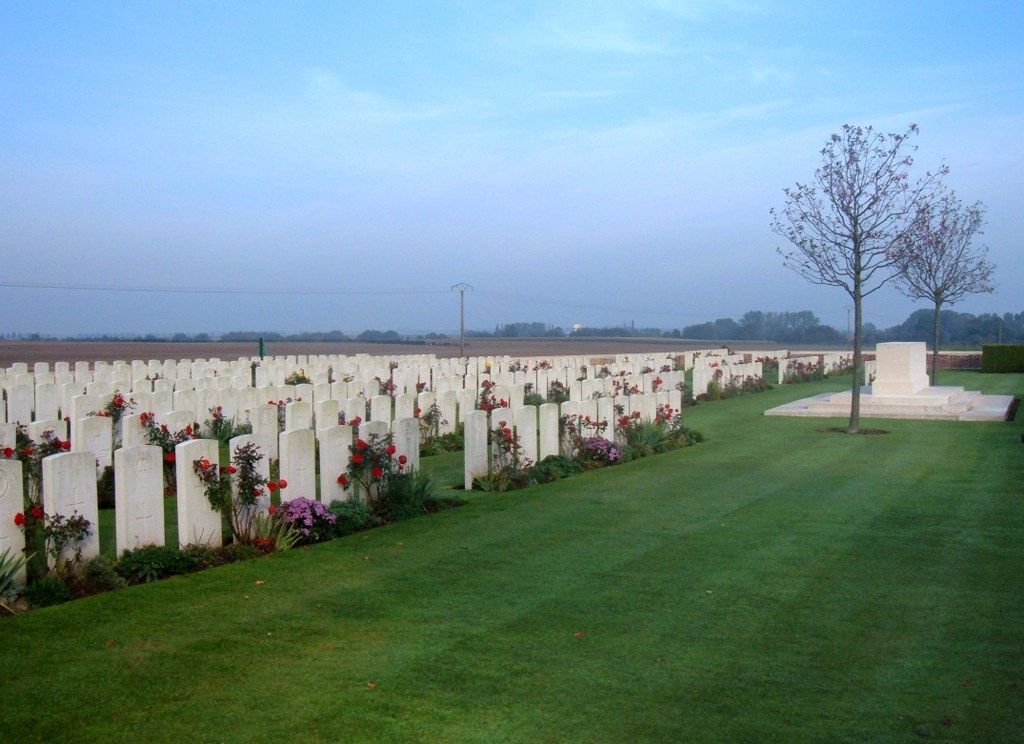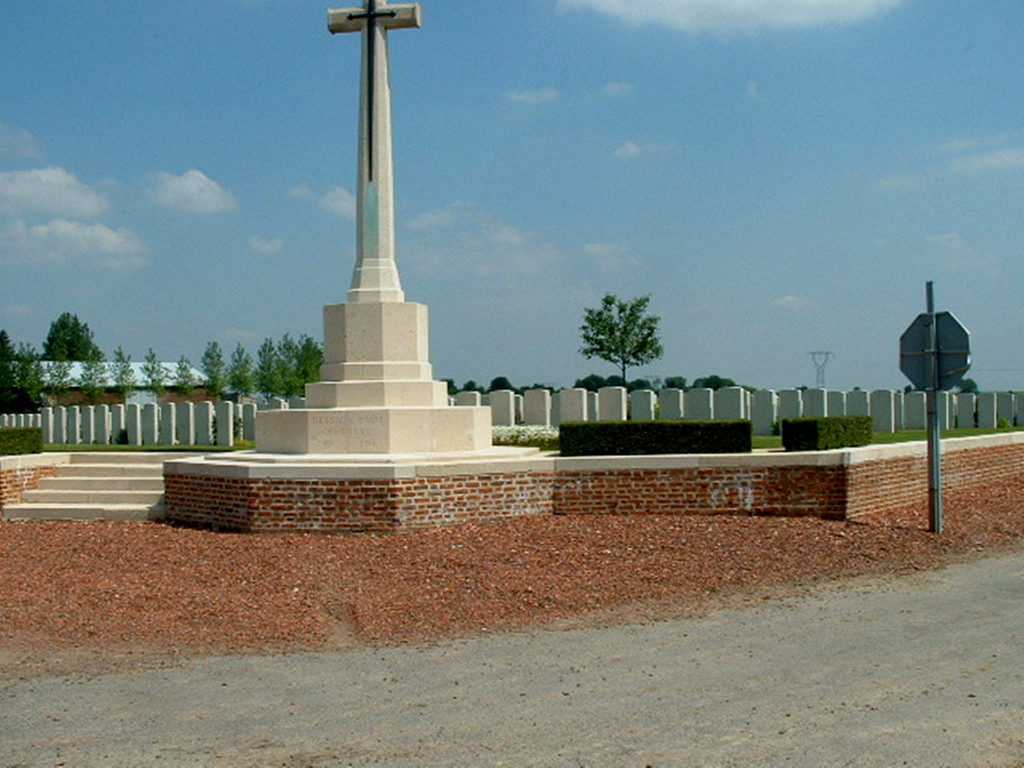Delsaux Farm Cemetery, Beugny
- Country France
- Total identified casualties 436 Find these casualties
- Region Pas de Calais
- Identified casualties from First World War
- GPS Coordinates Latitude: 50.10871, Longitude: 2.9338
Location information
This cemetery is near the village of Beugny, 19 kilometres south-west of Cambrai on the Bapaume-Cambrai road (RN30). The RD20 Haplincourt/Roquiny forms a T junction with the RN30 at the Mairie in Beugny. The Cemetery is signposted at this point and is 1 kilometre from the T junction leaving Beugny on the RD20 in the direction of Haplincourt. The cemetery is on the left adjacent to the RD20.
Visiting information
Wheelchair access to this site is possible, but maybe by alternative entrance. For further information regarding wheelchair access, please contact our enquiries dept. on 01628 634221.
History information
Delsaux Farm was a point on the German defensive system known as the Beugny-Ytres line, which was reached by Commonwealth troops on 18 March 1917, and passed on the following day. The farm was lost on 23 March 1918 after the gallant defence of Beugny by the 9th Welsh Regiment and their withdrawal, but it was retaken by the 5th Division on 2 September 1918, and on the next day the same division occupied Beugny village. After their advance in March 1918, the Germans made a cemetery (Beugny Military Cemetery No.18) at the cross-roads, and in it buried 103 Commonwealth and 82 German dead. The site was extended in October - November 1918 by the 29th and 46th Casualty Clearing Stations, which came to Delsaux Farm and made the present cemetery. A little later, the German graves of March 1918 were removed and the 103 Commonwealth dead reburied in Plot I, Row J, Plot II, Row A, and Plot III, Rows B, C and D. The rest of the cemetery was made when graves were later brought in from the battlefield. Delsaux Farm Cemetery contains 495 burials and commemorations of the First World War. 61 of the burials are unidentified and 32 others, identified as a whole but not individually, are marked with headstones inscribed "Buried near this spot". The cemetery was designed by Sir Edwin Lutyens.



